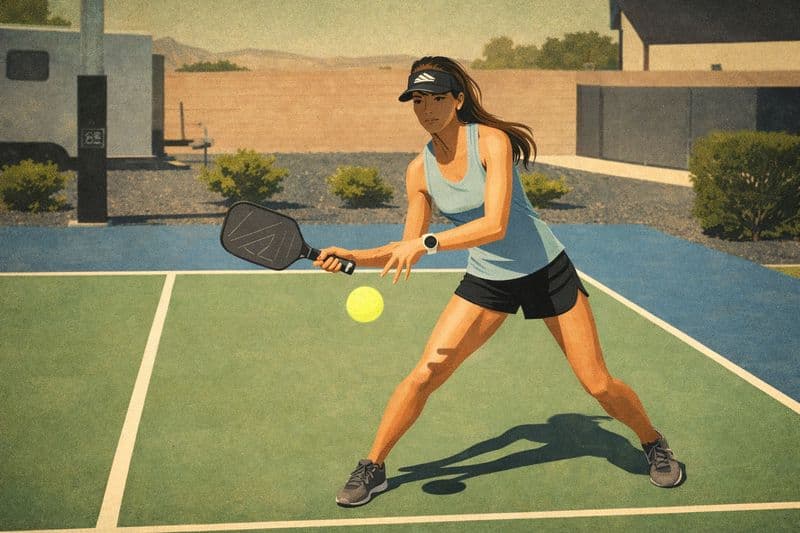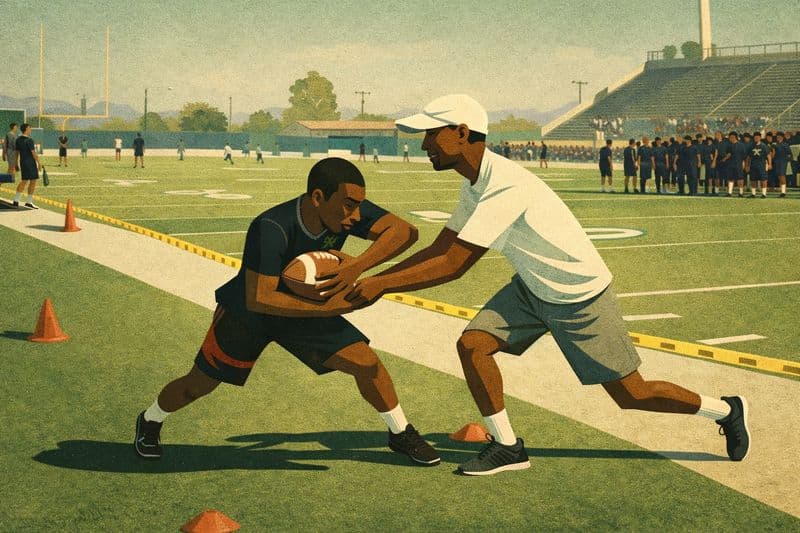When you're a beginner at tennis, you're probably not expecting to win every game — but let's be real: it's still disheartening when you keep encountering the same stumbling blocks. Whether it's misjudging the ball's trajectory, struggling with your serve, or simply not moving your feet fast enough, these repetitive hurdles can dampen your enthusiasm for the game.
Here are the most common rookie tennis mistakes TeachMe.To coaches see, and more importantly, how to overcome them.
The Most Common Mistakes Our Coaches See
Our coaches have their eagle eyes on the court, and they've noticed a pattern of mistakes that trip up new players. Here are the ones they encounter most often:
Overhitting the ball: Rookies often think power is the key, sending the ball flying out of bounds. It's crucial to learn that control and precision often trump brute strength in tennis.
Not moving feet enough: Tennis is a game of constant movement. New players tend to plant their feet, leading to sluggish responses to their opponent's shots. Regular footwork drills can dramatically improve your mobility on the court.
Poor serve technique: Many beginners struggle with their serve, either missing the mark or serving too weakly. Focusing on your serve technique in practice sessions can turn your serve into a powerful weapon rather than a liability.
Technical Flaws
Technical aspects of tennis are often the most challenging for newcomers. Here's what to watch out for:
Incorrect grip: Holding your racket improperly can limit your shot power and accuracy. Learning the right grip for forehands, backhands, and serves is foundational to improving your game.
Bad posture and stance: Your body's position affects every shot you make. New players frequently have a stance that's too rigid or too lax, leading to ineffective shots. Practicing the correct stance will make your movements more efficient and your shots more powerful.
Swinging inaccurately: Whether it's a forehand or backhand, many beginners struggle with the swing's mechanics. Understanding the swing's rhythm and practicing consistently can help make your shots more reliable and forceful.
Tactical Errors During the Game
Tennis isn't just physical; it's a mental chess match. Here are common strategic missteps:
Playing to the opponent's strengths: Beginners often don't realize they're hitting the ball right where their opponent wants it. Learning to observe and adapt to your opponent's weaknesses can turn the tide of the match.
Misjudging when to play it safe or go for the shot: Knowing when to take a risk and when to ensure your ball lands in play is key. This judgment improves as you gain more match experience and confidence in your shot selection.
Lack of game plan: Entering a match without a strategy is like going into battle without a plan. Developing a basic game plan based on your strengths and sticking to it can improve your performance significantly.
Mental Mistakes
The mental aspect of tennis can be just as challenging as the physical. Here's where rookies often stumble:
Losing focus: It's easy to get distracted on the court, whether by the crowd, the weather, or your own thoughts. Developing mental discipline and staying focused on the game at hand is crucial for consistent performance.
Getting frustrated: Tennis is a game of highs and lows, and it's easy to let frustration get the better of you when things aren't going your way. Learning to stay calm and composed under pressure is essential for success.
Succumbing to pressure: Whether it's the pressure of a close match or the expectations you place on yourself, letting pressure dictate your game can lead to poor decision-making and missed opportunities. Developing mental resilience and confidence in your abilities can help you overcome pressure and perform at your best.
Improper Tennis Equipment
Using the wrong equipment can be like bringing a knife to a gunfight — you've set yourself at a disadvantage from the start. Here's how improper gear can hinder your game:
Wrong racket size: Using a racket that's too big or too small for your hand can affect your grip and swing, leading to inconsistent shots. Choosing the right racket size based on your hand size and playing style is essential for optimal performance.
Ill-fitting shoes: Tennis is a sport that requires a lot of lateral movement, and wearing shoes that don't provide adequate support or grip can increase your risk of injury and hinder your agility on the court. Investing in proper tennis shoes that fit well and offer stability and traction can improve your performance and prevent injuries.
Inadequate string tension: The tension of your racket strings affects your shot control and power. Using strings that are too loose can result in lack of control, while strings that are too tight can reduce power and increase the risk of arm injuries. Finding the right string tension for your playing style and preferences is crucial for optimizing your performance on the court.
The Average Learning Curve of Tennis Players
The journey to overcome common rookie tennis mistakes is different for everyone, but there are some common milestones along the way. Typically, beginners start by learning the basic strokes and rules of the game, gradually improving their skills through practice and experience. This means taking tennis lessons, attending tennis camps, and even practicing alone when your partner is busy.
With dedication and perseverance, most players see significant improvement within the first year of regular play, but mastering tennis is a lifelong pursuit that requires continuous learning and refinement of skills.
Remember: progress may be slow at times, but every hour spent on the court brings you one step closer to becoming the player you aspire to be. Learn more about how long it takes to get good at tennis.
What You Can Learn From the Pros
Finally, there's a light at the end of the tunnel. Watching professional players can be a masterclass in how to overcome common rookie tennis mistakes. Notice how they glide across the court with grace, serve with precision, and maintain composure under pressure? These are not just feats of athletic prowess but lessons in dedication, strategy, and mental fortitude.
One of the best ways to learn from the pros is by taking a tennis lesson with a coach. Here’s where TeachMe.To comes in — in just a few clicks, you can find a top tennis coach near you. Get started today.



